1. McMansions With Too Many Gables

In the 1990s and early 2000s, sprawling McMansions with complicated rooflines were the ultimate suburban dream. The more peaks and angles a house had, the more “impressive” it seemed from the street. Families equated square footage with success, and bigger was always considered better. Today, though, those same oversized homes look dated and inefficient, with many people preferring cleaner lines and sustainable design.
Maintenance costs for these homes are enormous, especially when you factor in heating, cooling, and endless roof repairs. Younger buyers tend to see them as wasteful rather than aspirational. What once screamed “we made it” now suggests poor taste and excess. Simpler, smarter homes are winning out, while McMansions linger on the market.
2. Granite Countertops in Every Kitchen

Granite became the default upgrade in kitchens around the early 2000s. Having those shiny, speckled slabs meant you had invested in luxury. Realtors pushed it hard as a selling point, and homeowners followed suit to keep up with the neighborhood. Now, granite feels less like a status symbol and more like a cliché.
Buyers are moving toward quartz, recycled materials, or even butcher block for a warmer, less “cookie-cutter” feel. Granite’s busy patterns also don’t fit modern minimalist design trends. It once symbolized affluence, but now it signals a lack of originality. A kitchen full of granite just feels like a time capsule.
3. Monster SUVs in the Driveway

Owning a hulking SUV—think Hummer H2 or Cadillac Escalade—was practically shorthand for success in suburbia. These cars were loud, oversized, and meant to make a statement. Families wanted the biggest vehicle they could get, regardless of whether they actually needed it. At the time, the bigger the car, the bigger the ego.
Today, these gas-guzzlers look out of touch. Rising fuel costs and climate concerns have made them impractical and even embarrassing. Crossovers and EVs now signal a smarter, more modern kind of status. A driveway full of outdated SUVs feels less like wealth and more like denial.
4. Jacuzzi Tubs in the Master Bathroom

Luxury homes once weren’t complete without a massive jacuzzi tub. Developers hyped them as the ultimate indulgence, and couples imagined unwinding with a glass of wine and bubbles. They took up half the bathroom, but homeowners believed they were worth it. Now, they’re more often dust collectors than daily rituals.
Most people never actually used them because they’re hard to clean and guzzle water. Modern buyers prefer spacious walk-in showers with sleek fixtures instead. Jacuzzi tubs look clunky and wasteful, especially in smaller bathrooms. What once seemed glamorous now feels impractical and outdated.
5. Formal Living Rooms No One Used
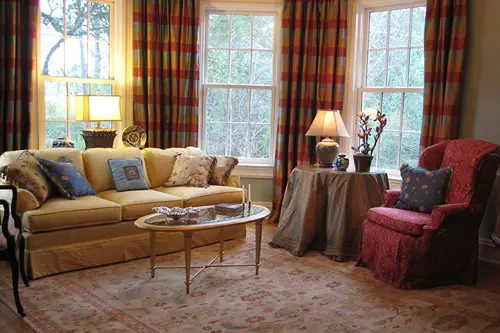
The “formal living room” was once a suburban staple, kept pristine for guests who almost never came. Families rarely spent time there, but having one meant you’d arrived. Furniture was stiff, decor was overdone, and children were often banned from entering. It was more about appearances than practicality.
Now, extra square footage is expected to serve a purpose. Families want open-concept layouts and spaces that are lived in, not museum pieces. A room that no one uses is seen as wasteful. Today’s success is measured by function, not empty showrooms.
6. Elaborate Front Lawns
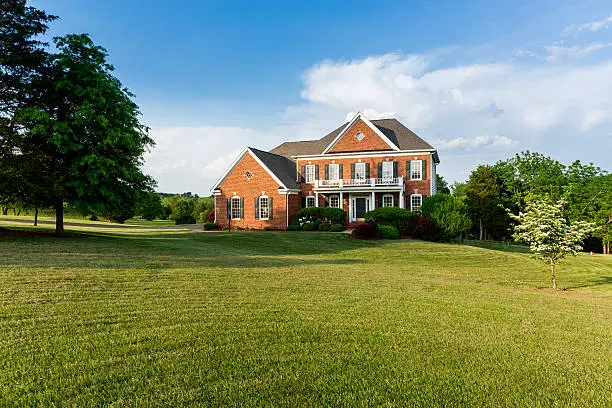
Having a perfectly manicured lawn used to be a badge of honor. Homeowners poured money into sod, sprinklers, and fertilizer to maintain endless stretches of grass. A lush lawn suggested control, order, and financial stability. It was the suburban equivalent of a tailored suit.
Today, those lawns are seen as water-wasting and high-maintenance. Droughts and environmental awareness have shifted preferences toward native plants and eco-friendly landscaping. What once looked polished now looks tone-deaf. A “perfect lawn” can come across as dated and environmentally careless.
7. Home Theaters in the Basement

In the 2000s, installing a dedicated home theater was the pinnacle of suburban luxury. Recliner seating, surround sound, and blackout curtains made basements feel like mini multiplexes. Families showed them off to neighbors as proof of success. At the time, it felt futuristic.
Now, streaming and flexible media setups make them unnecessary. Most people prefer a cozy living room with a big TV instead of a basement shrine. Home theaters often go unused and feel like wasted space. What once looked high-tech now feels clunky and overbuilt.
8. Tuscan-Style Kitchens
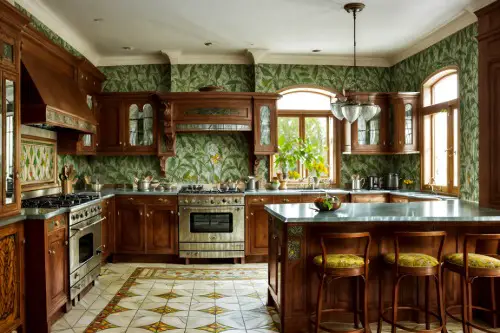
Warm-toned cabinets, wrought iron accents, and faux-plaster walls were the rage in the early 2000s. The Tuscan kitchen look was marketed as Old World luxury. Families poured money into ornate details to give the impression of sophistication. For a while, it felt like the height of suburban chic.
Today, those kitchens feel heavy and outdated. Sleek, airy designs are far more appealing to modern buyers. The faux finishes and ornate details look fussy rather than refined. What was once luxurious now reads as stuck in the past.
9. Gold-Plated Bathroom Fixtures
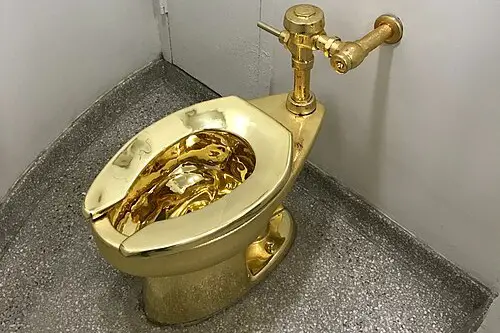
Gold fixtures were once considered the ultimate flex in a newly renovated home. They added a flashy gleam that was meant to signal wealth. For a while, homeowners saw them as a necessary upgrade from basic chrome. They were the bathroom equivalent of wearing big jewelry.
Now, they look garish and over-the-top. Buyers today prefer matte black, brushed nickel, or softer brass tones. The shiny gold instantly dates a bathroom to a specific era. What once looked like class now looks like trying too hard.
10. Giant Entertainment Centers
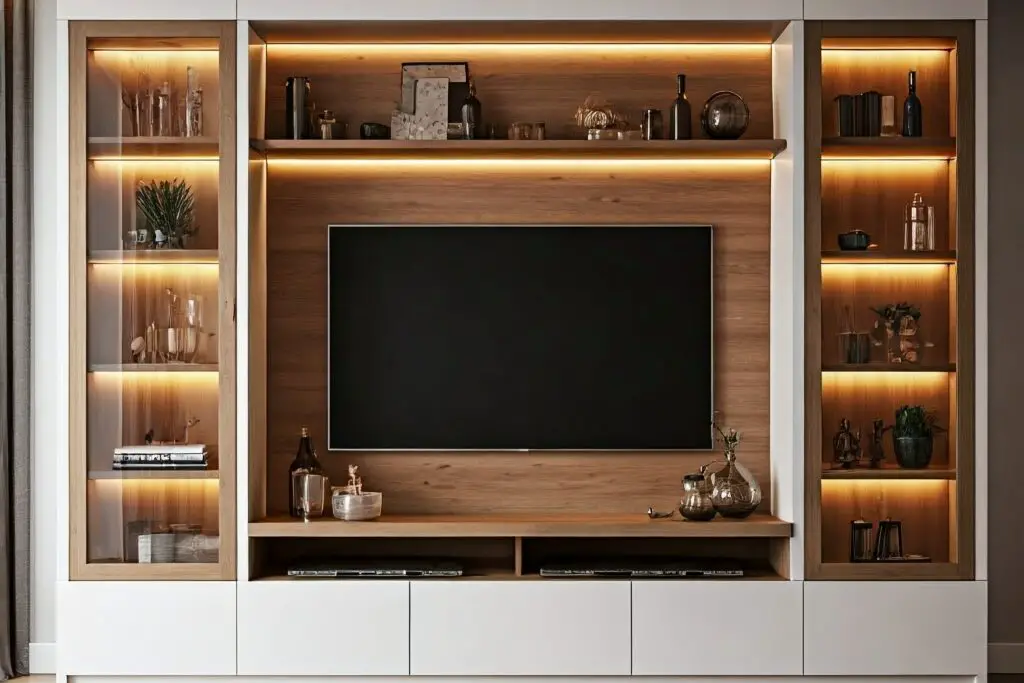
Before flat screens, bulky entertainment centers dominated suburban living rooms. These oversized wood units housed tube TVs, VCRs, and stacks of DVDs. Having one was a way of displaying your collection and showing off your tech. They were basically suburban thrones for the television.
Now, they’re space hogs. With sleek TVs that mount on the wall, nobody wants a hulking cabinet taking up half the room. They make a space look cramped and old-fashioned. What once symbolized cutting-edge media now screams clutter.
11. Brick Mailbox Monuments
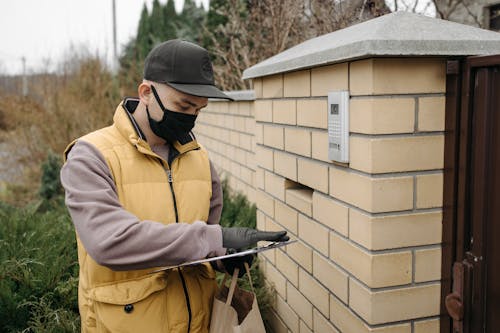
In many neighborhoods, upgrading your mailbox to a full brick or stone structure was a subtle way to flex. It was supposed to say, “I care about my property value.” For some, it was even part of the HOA culture. A plain post-and-box setup was considered beneath you.
Today, those mailboxes look strangely excessive. They’re expensive to repair when damaged and add little to home value. A simple, clean mailbox is more in line with current tastes. What once felt like sophistication now just feels like overkill.
12. Chandelier Over the Foyer
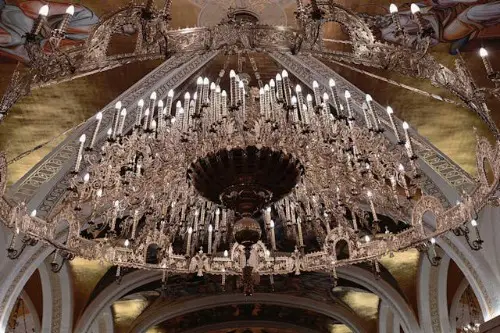
Nothing said “suburban success” like a giant chandelier hanging over a two-story entryway. Guests walking in were meant to be impressed instantly. The sparkle, the size, and the unnecessary grandeur were all part of the appeal. It was the suburban red carpet moment.
Now, they often look gaudy and impractical. They’re difficult to clean, expensive to maintain, and rarely match today’s simpler design aesthetics. Many homeowners are swapping them for modern pendant lighting. What once was meant to wow now just feels dated and overdone.
13. Expensive Faux Stone Facades
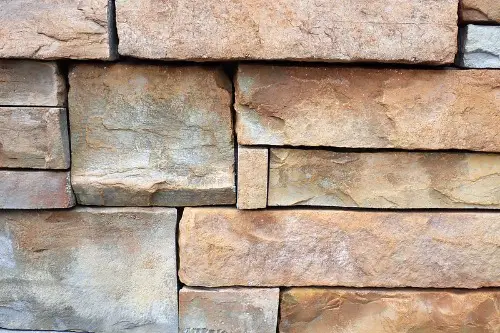
Many suburban homes added faux stone veneers to appear more upscale in the 2000s. The textured fronts were meant to mimic high-end estates or historic mansions. Homeowners believed stone instantly elevated curb appeal and reflected financial success. Real estate magazines praised them as a must-have exterior upgrade.
Today, these facades often look cheap and overdone. The fake texture can feel cartoonish, especially when paired with other dated exterior elements. Buyers now favor real materials or minimalist siding for a cleaner, more authentic look. What once signaled affluence now just screams “trying too hard.”
14. Oversized Swing Sets in the Backyard
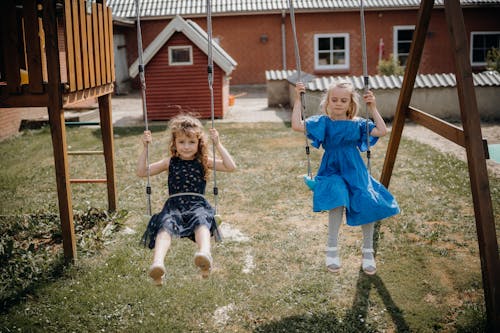
Backyard playgrounds once doubled as status symbols for suburban families. The bigger the swing set, the more it suggested a family could afford to splurge on leisure. These multi-level structures came complete with slides, monkey bars, and sometimes even mini climbing walls. They were a visual declaration of a fun, successful household.
Now, huge playgrounds can make a yard feel cramped and cluttered. Minimalist outdoor spaces or simple playsets are preferred for safety, style, and practicality. What was meant to impress neighbors now looks overambitious. Families are opting for flexibility over spectacle in their outdoor spaces.
15. Over-the-Top Holiday Decorations
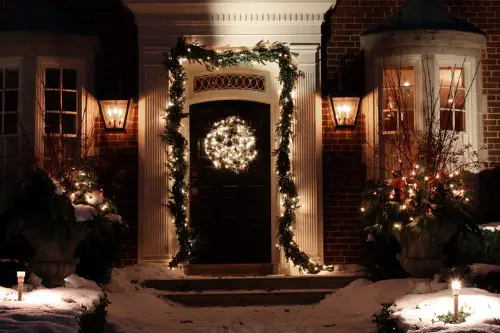
Decking the house with hundreds of lights and inflatable characters was once a suburban bragging right. People would compete to outshine the neighbors, creating elaborate displays each season. It suggested wealth, creativity, and community standing. Annual photo ops and neighborhood tours were part of the fun.
Now, extreme decorations can look chaotic and tacky. Minimalist or tastefully curated displays feel far more modern and inviting. LED lights and subtle accents replace the gaudy extravagance of past decades. What was a sign of festive success now just reads as over the top.
16. Built-In Wet Bars
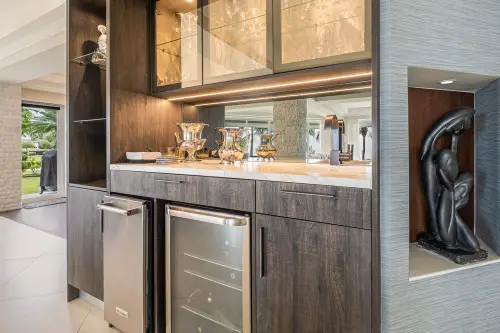
Wet bars were once the crown jewel of suburban entertaining. They promised effortless hosting, complete with glassware, wine racks, and mini refrigerators. Homeowners imagined sophisticated gatherings around the bar, showing off their taste and wealth. Realtors touted them as essential upgrades for “adult spaces.”
Today, they’re rarely used and often take up valuable square footage. Open kitchens and multifunctional islands have replaced the need for dedicated bar spaces. What once seemed classy now feels like an awkward relic. Modern entertaining favors flexibility over fixed opulence.
17. Decorative Pillars and Columns
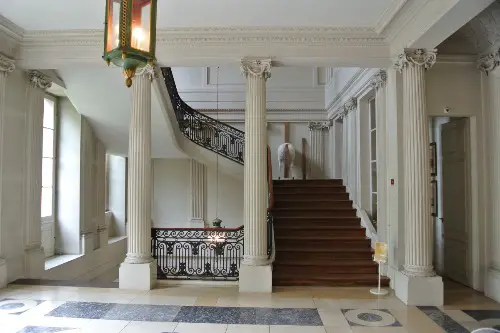
Columns lining entryways or framing porches were a classic status marker in early 2000s suburban architecture. They were meant to evoke grandeur, elegance, and European-style sophistication. Families thought they added instant curb appeal and signaled architectural knowledge. Real estate agents encouraged them as a sign of “refined taste.”
Now, many buyers see them as cheesy or dated. The heavy, ornamental look clashes with today’s preference for clean lines and open, airy spaces. Columns meant to impress now risk making a home feel overworked. What was once a statement of refinement now feels forced.
18. Overstuffed Sectional Sofas
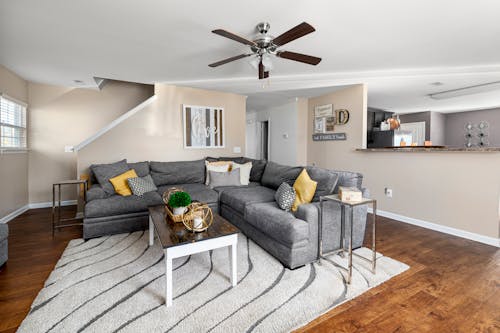
Massive sectional couches were the ultimate living room centerpiece. They promised comfort, social status, and room for the whole family plus guests. Leather or bold-patterned fabrics made a statement about taste and success. They were central to the idea of the perfect suburban lounge.
Now, oversized sectionals can overwhelm a room and restrict flexibility. Sleeker, modular furniture allows for more movement and adaptability. What was once a symbol of abundance now signals impracticality. Today’s buyers prefer style that balances comfort and space efficiency.
This post 18 Things That Used to Mean “Success” in Suburbia — But Now Just Look Tacky was first published on Greenhouse Black.
